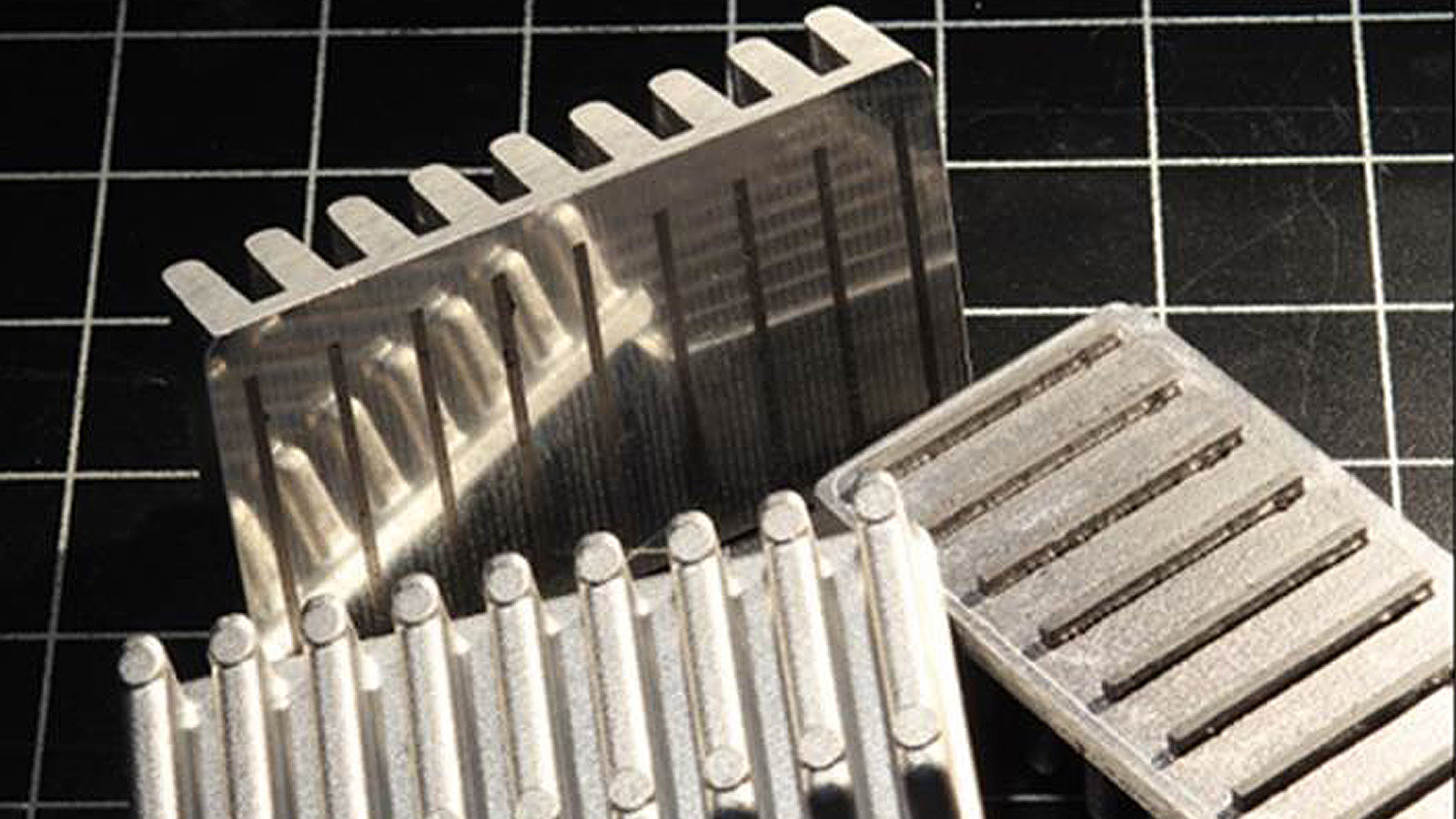More effective heat dissipation enables new applications
Chemnitz University and EU-funded project “THERMACO” presented in Brussels
-

Cooling system of alumnium and graphites to use for e.g. high-performance electronics. Photo: Professorship Micromanufacturing Technology
The “Factories of the Future Community Day” took place in Brussels on May 16, 2017. Aims of the event were the presentations of research and development results of EU-funded projects from the 7th EU research framework program and the exchange with international researchers and representatives of the European Commission.
Within this framework, Prof. Andreas Schubert, Chair of the Professorship Micromanufacturing Technology, and researcher Dr. Henning Zeidler, presented the EU-funded project “THERMACO”. In the project, cooling solutions based on graphites or rather pyrolytic graphites applied as thermical highways in metal matrix compounds were presented. This novel application of material combinations with unique thermal characteristics in the heat management could be the breakthrough of numerous different applications in the electro mobility, renewable energy production, as well as in the performance and high-performance electronics as its use enables a size reduction of systems with increased functional integration and high performance.
Within the framework of the project, first application-relevant demonstrators for the automotive engine cooling or rather the cooling of high-performance electronics for the partners Lamborghini and Infineon were developed and their function of targeted heat dissipation experimentally verified.
Innovative heat transfer in components with high density and low weight
Utilization of newly developed heat transferring materials such as graphites or pyrolytic graphites, which provide excellent heat transferring characteristics, were the main aim of the research project. Their heat conductivity is approx. 10 times that of aluminum and five times that of copper. The mechanical properties of these carbon-based materials such as strength and durability prevented so far their wide-ranging application. That is the point where THERMACO set in: the basic idea of the international research team was to combine the material-specific advantages of graphites or rather pyrolytic graphites with an aluminum matrix in order to realize components with high strength, low weight, and unique thermal characteristics. “Thus, it is possible to direct the heat dissipation of the heat source through inserts of graphites or graphite in the aluminum with great efficiency for example to a central cooling system”, explains Prof. Andreas Schubert, Chair of the Professorship of Micromanufacturing Technology and THERMACO coordinator. As the heat transport will for the most part take place over the inserts, the so-called thermal highways, the aluminum component is only insignificantly heated. Thereby, the special feature of the anisotropic heat conductivity of the thermal highways is fully used, which runs in two directions with approx. 2000 Watt per meter and Kelvin and in the third direction with approx. 5 Watt per meter and Kelvin. With this procedure, in one direction a heat isolation and in the two other directions an effective heat transport and dissipation is performed.
For the implementation of the idea the competences and experiences of the international team with regard to material development, heat transport, multiphysics CAE, and production procedures such as injection molding of the graphite inserts as well as the finishing and micro structuration had to be pooled and expanded. Furthermore, the researchers of the project occupied themselves with further material combinations such as copper and graphites. Here too, the potential of innovative material combinations for the effective heat dissipation could be successfully verified.
The project “THERMACO”g
Eleven partners from seven countries from research and industry worked together on the aim to develop solutions for efficient heat dissipation through innovative material combinations from September 1st, 2013, till August 31st, 2016. The project was funded in the framework of the 7th framework program of the European Union for research, technological developments, and demonstration under the funding code Nr. 608978. The overall budget was approx. 5 million euros with a funding sum of about 3,4 million euros.
Further information is available from Prof. Andreas Schubert, phone +49 371 531 34580, email andreas.schubert@mb.tu-chemnitz.de
Matthias Fejes
06.06.2017





